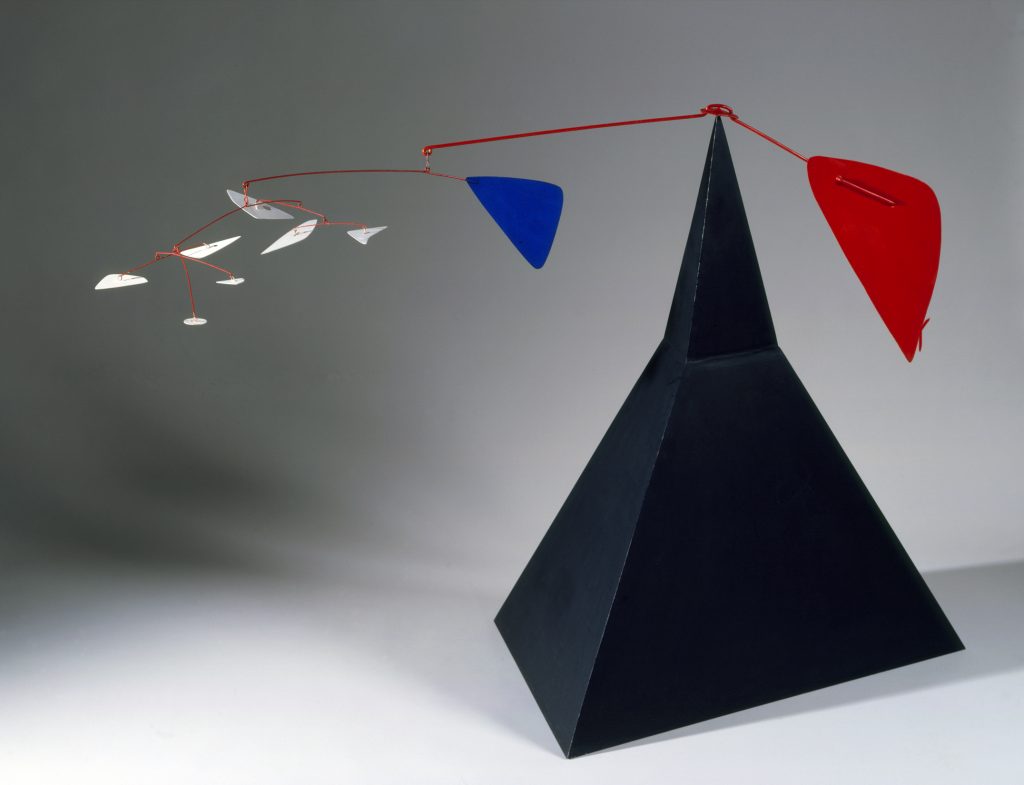Day 1:
Review the roles that organisms play in an ecosystem: producers, consumers, decomposers. Pass out 1”X9” strips of colored paper to your students. Each student will need 1 strip of each of these colors: yellow, green, light green, pink, red, brown. Label the strips together as a class.
- Yellow-sun
- Green- producer
- Light green- primary consumer, herbivore
- Pink- secondary consumer, carnivore
- Red- tertiary consumer, carnivore
- Brown- decomposer
Discuss what would happen if one group of organisms disappeared from the food chain. Have the students lay the strips on their desks and remove one strip from the food change and tell the effects. Discuss the word interdependence and how it relates to organisms in the food chain. Following the discussion, the students can glue their strips into links to make a “chain.”
Project an image of Alexander Calder’s Tricolor on Pyramid. Ask the students to think about these questions. Write the questions on the board so students can refer back to them.
- How does the artist show interdependence? Was he successful in showing in showing interdependence or not?
- What would happen if you tried to change this artwork?
After the discussion, thank the students for their participation.
Day 2:
Divide the class into five heterogeneous groups. Assign each group an ecosystem to research: deciduous forest, rain forest, grassland, fresh-water lake, ocean. Each group will research their ecosystem to find out the organisms that live there and the role of these organisms. The groups will need to find information about producers, consumers, and decomposers. The groups will plan a food change that represents their assigned ecosystem. Pass out the Food Chain Design Brief. Go over the Background, Challenge, Criteria and Materials sections of the Design Brief and answer any student questions about their task.
Days 3/4:
The groups will use fabric, yarn, and glue to create the organisms in their ecosystem. Each ecosystem should have the sun, a producer, 2 or more consumers, and a decomposer. The organisms of the food chain will be connected together, illustrating the interdependence within the ecosystem. The ecosystem food chains will be displayed together to represent the Earth.
Days 4/5:
Each group will present their ecosystem to the class, telling the names of the organisms in their ecosystem, the role of each organism and the importance of interdependence in an ecosystem.
